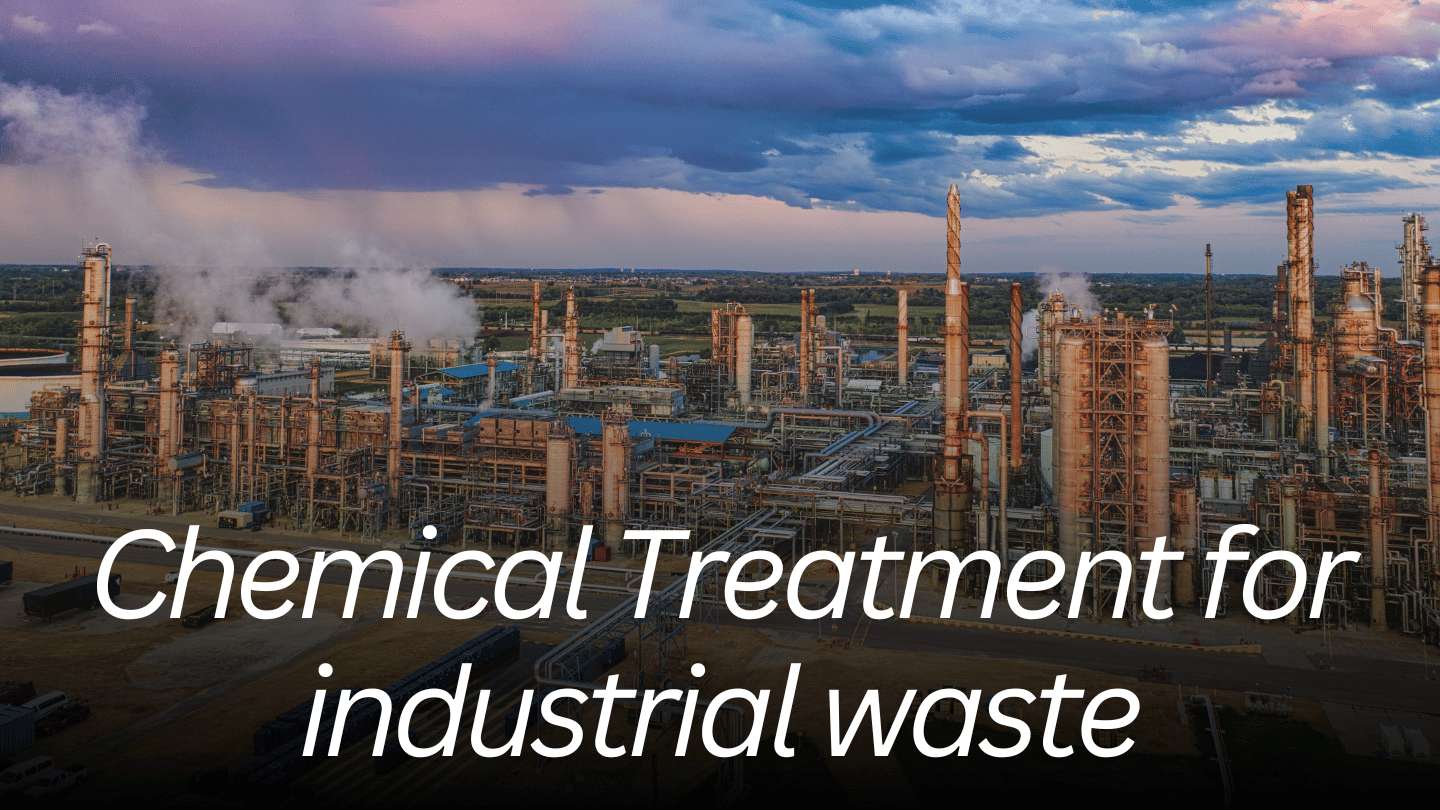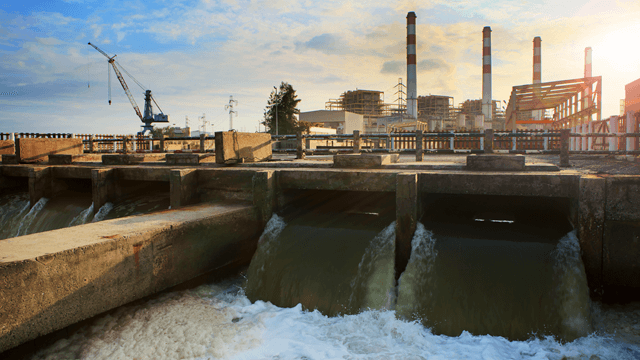Industrial Waste Water Treatment-- Secure the Environment with Professional Water Treatment Providers
Industrial Waste Water Treatment-- Secure the Environment with Professional Water Treatment Providers
Blog Article
Innovations and Breakthroughs in Hazardous Waste Water Therapy Technologies
The landscape of commercial wastewater therapy is undergoing a transformative change, driven by advancements that boost both efficiency and sustainability. As regulative requirements progress, the integration of AI and machine discovering into wastewater administration systems assures to make sure and streamline operations compliance.
Overview of Drainage Therapy Technologies
Wastewater therapy technologies encompass a range of methods made to get rid of pollutants from commercial effluents prior to their release into the atmosphere. These modern technologies are vital for preserving environmental balance and making certain compliance with ecological policies. The key classifications of wastewater treatment include physical, chemical, and biological approaches, each offering distinct functions based on the nature of the pollutants existing.

Biological treatment techniques utilize microbes to weaken raw material, making them specifically efficient for organic-rich effluents. Methods like turned on sludge and biofilm activators harness the all-natural degradation capacities of bacteria, leading to significant reductions in biochemical oxygen demand (FIGURE)
Advanced Purification Methods
Advanced purification methods stand for a vital advancement in the world of industrial wastewater therapy, enhancing the efficiency of pollutant removal processes. Industrial Waste Water Treatment. These methods incorporate a variety of technologies, including microfiltration, ultrafiltration, nanofiltration, and reverse osmosis, which offer sequential obstacles for various bit dimensions and chemical frameworks
Microfiltration and ultrafiltration utilize membrane systems to get rid of put on hold solids, bacteria, and larger natural particles, enhancing the high quality of effluent before more treatment. Nanofiltration connects the void in between ultrafiltration and turn around osmosis, effectively removing organic compounds and divalent ions, hence minimizing the lots on downstream procedures.
Reverse osmosis supplies the highest degree of purification by permitting only water and tiny particles to go through its semi-permeable membrane layers, making it ideal for reclaiming premium water from industrial effluents. Recent developments in membrane layer modern technology, consisting of the advancement of even more fouling-resistant and sturdy materials, have considerably improved functional effectiveness and lowered expenses.
Integrating these innovative filtration techniques not only enhances the total treatment procedure but likewise adds to sustainability efforts by making it possible for water reuse and resource healing in commercial setups. (Industrial Waste Water Treatment)
Biological Therapy Technologies

Furthermore, the growth of engineered biological systems, such as membrane layer bioreactors (MBRs), integrates biological therapy with sophisticated membrane purification. This assimilation enables greater effluent high quality and decreased impact, making it ideal for space-constrained industrial centers. Advancements in genetically crafted bacteria read here have actually likewise arised, enhancing the biodegradation of details pollutants, such as drugs and hefty metals, that are commonly challenging to eliminate.
Additionally, the application of bioaugmentation strategies, where advantageous germs are introduced to boost the existing organic therapy processes, has revealed promising cause enhancing therapy efficiency. These developments collectively indicate a trend in the direction of even more effective and lasting organic therapy methods that can adjust to the developing intricacies of commercial wastewater streams. As industries continue to focus on environmental compliance, these organic advancements will play an essential duty in wastewater administration.

Source Recuperation Approaches
In industrial setups, the combination of resource recovery techniques has actually become increasingly vital for enhancing sustainability and lessening waste. These techniques concentrate on extracting valuable products and power from wastewater streams, therefore transforming prospective toxins right into recyclable resources.
One famous strategy is vitamins and mineral recuperation, where nitrogen and phosphorus, often existing over in wastewater, are caught and exchanged fertilizers. This not just reduces environmental impacts however likewise gives a round economy remedy for agricultural applications. In addition, technologies such as anaerobic food digestion permit the conversion of natural waste into biogas, a renewable power source that can offset fossil fuel use in industrial procedures.
Moreover, advanced purification and membrane layer technologies help with the recovery of industrial by-products such as steels and salts. These recovered materials can be reintegrated right into manufacturing procedures, reducing the requirement for virgin sources.
Future Fads in Drainage Administration
As sectors progressively prioritize sustainability, the future of wastewater management is established to undergo considerable transformations. Technical innovations, such as artificial intelligence and artificial intelligence, will certainly make it possible for much more reliable monitoring and management of wastewater systems. These technologies can predict upkeep demands, optimize therapy procedures, and boost decision-making, ultimately lowering operational expenses and ecological influence.
In addition, the assimilation of circular economic climate principles will certainly play an important role in wastewater administration. Industries are anticipated to move towards systems that not just treat wastewater however additionally recoup valuable sources, such as nutrients, water, and energy. This transition will decrease waste and promote the reuse of products, aligning with global sustainability goals.
Arising therapy techniques, such as membrane layer bioreactors and advanced oxidation processes, will certainly better improve the performance of wastewater treatment, permitting higher top quality effluents ideal for reuse. In addition, governing structures are most likely to progress, stressing stricter criteria for wastewater discharge and encouraging sectors to Click Here take on cutting-edge therapy options.
Verdict
In final thought, the advancement of industrial wastewater therapy technologies demonstrates a substantial change towards improved performance and sustainability (Industrial Waste Water Treatment). Advancements in innovative purification strategies, biological therapies, and source healing techniques highlight the sector's commitment to ecological stewardship.
The landscape of commercial wastewater treatment is going through a transformative shift, driven by developments that improve both effectiveness and sustainability.Wastewater therapy innovations include an array of techniques developed to eliminate impurities from industrial effluents before their launch right into the setting.Utilizing the power of organic procedures has actually check led to significant technologies in the therapy of commercial wastewater.Additionally, the execution of bioaugmentation strategies, where helpful microbes are introduced to boost the existing biological treatment processes, has actually shown encouraging outcomes in boosting treatment performance. These innovations collectively symbolize a fad in the direction of even more reliable and sustainable biological therapy methodologies that can adjust to the progressing intricacies of commercial wastewater streams.
Report this page